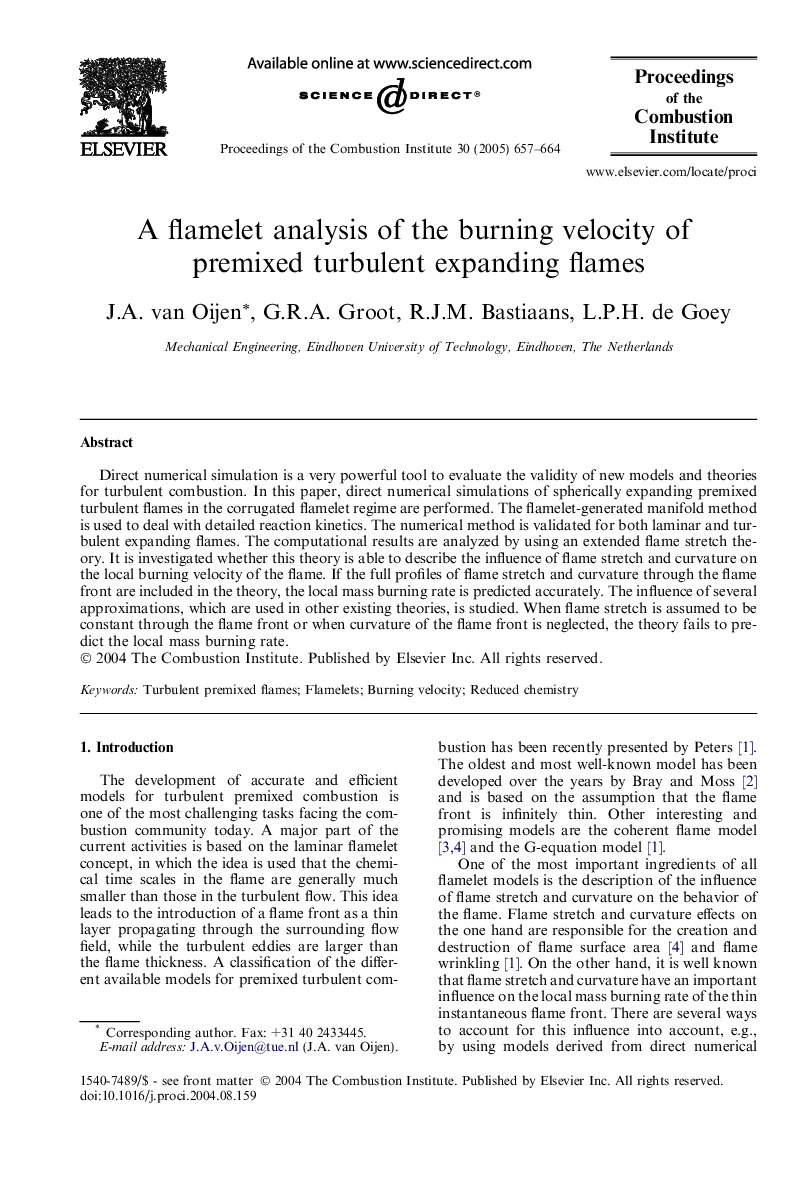| Article ID | Journal | Published Year | Pages | File Type |
|---|---|---|---|---|
| 9637388 | Proceedings of the Combustion Institute | 2005 | 8 Pages |
Abstract
Direct numerical simulation is a very powerful tool to evaluate the validity of new models and theories for turbulent combustion. In this paper, direct numerical simulations of spherically expanding premixed turbulent flames in the corrugated flamelet regime are performed. The flamelet-generated manifold method is used to deal with detailed reaction kinetics. The numerical method is validated for both laminar and turbulent expanding flames. The computational results are analyzed by using an extended flame stretch theory. It is investigated whether this theory is able to describe the influence of flame stretch and curvature on the local burning velocity of the flame. If the full profiles of flame stretch and curvature through the flame front are included in the theory, the local mass burning rate is predicted accurately. The influence of several approximations, which are used in other existing theories, is studied. When flame stretch is assumed to be constant through the flame front or when curvature of the flame front is neglected, the theory fails to predict the local mass burning rate.
Related Topics
Physical Sciences and Engineering
Chemical Engineering
Chemical Engineering (General)
Authors
J.A. van Oijen, G.R.A. Groot, R.J.M. Bastiaans, L.P.H. de Goey,
